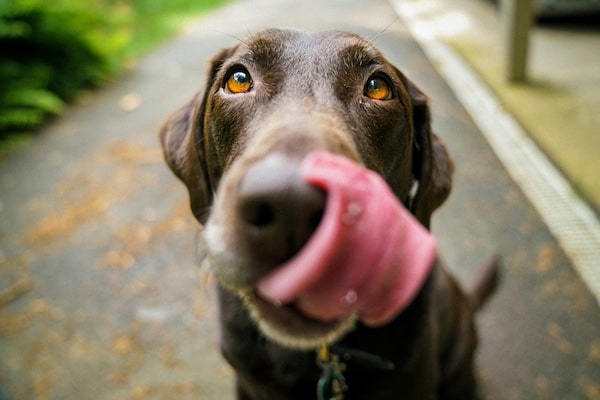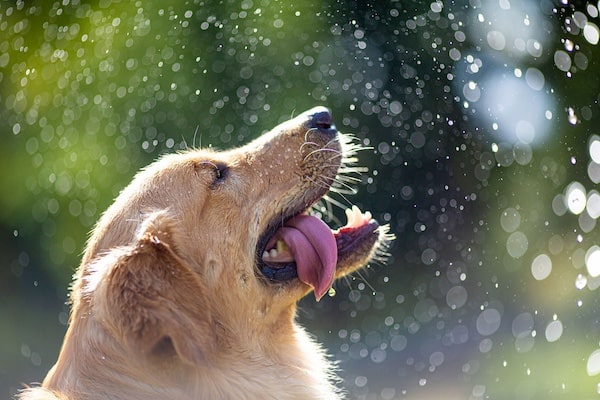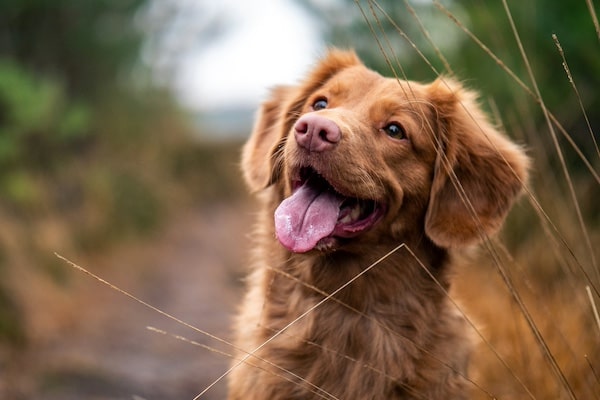Dogs rely on their paws for almost every activity—from walking and running to digging and playing. Given the significant role paws play in a dog’s life, their health is paramount. Healthy paws contribute to a dog’s overall well-being and mobility. However, just like human skin, paw pads can suffer from various problems such as dryness, cracks, and wounds, which can be painful and lead to more serious issues if untreated.
Paw balm is a specialized product designed to protect and heal dog paws. It acts much like a moisturizer and protective barrier for the skin, tailored specifically for the unique structure and needs of paw pads. Regular application of paw balm can prevent the development of dry, cracked pads, provide protection from harsh weather conditions, and even prevent infections. With ingredients often including natural moisturizers and healing agents, paw balm is an essential component of routine dog care, ensuring your furry friend keeps happy, healthy, and ready for adventure on all fours.
In this guide, we will explore how incorporating paw balm into your dog’s care routine can prevent common paw issues and contribute significantly to their overall paw health.
Understanding Dog Paw Health
Dog paws are complex structures that serve several crucial functions beyond merely supporting the dog while it walks. Each paw consists of five main parts: the pads, the claws, the digital pads, the metacarpal pad (front paw), or metatarsal pad (back paw), and the dewclaw. The pads are the thick, spongy sections that absorb shock and provide insulation against extreme temperatures. The claws help with grip and stability, especially when running or turning quickly. Together, these components work harmoniously to provide traction, cushion shocks, and protect deeper structures within the foot from injury.
Common Paw Problems
Paw health is an essential aspect of overall canine well-being, but these resilient structures can suffer from various ailments. Here are some of the most common issues that can affect dog paws:
- Cracks and Cuts: Just like human skin, the pads of a dog’s paws can crack and split if they become too dry. These cracks can be painful and may even bleed, making walking or running uncomfortable for the dog. Sharp objects on the ground can also cause cuts and abrasions.
- Dryness and Chapping: Paw pads can become excessively dry and chapped due to environmental conditions such as cold weather or exposure to chemicals like road salts. Chapped paws feel rough, may show visible cracks, and can be sensitive to touch.
- Burns and Blisters from Hot Surfaces: During hot weather, asphalt, pavement, and even sand can heat up to temperatures that can burn a dog’s paw pads. These burns can result in blisters, raw spots, and severe pain, impacting a dog’s ability to walk.
- Allergies and Infections: Dogs can develop allergies that affect their paws, leading to itching and irritation. Constant licking and chewing in response to this discomfort can exacerbate the problem, potentially leading to infections. Moreover, bacteria or fungi can invade minor wounds or cracks, resulting in more severe infections that require veterinary attention.
Understanding these common issues is the first step toward preventing them. By taking proactive measures, including the regular use of paw balm, dog owners can protect their pets’ paws from many of the most typical health concerns associated with these vital parts. This preventative approach not only keeps the paws healthier but also contributes to the overall quality of life and mobility of the dog.
The Benefits of Paw Balm
Paw balm is an essential tool for maintaining the health of a dog’s paws. Here are some of the primary benefits it offers:
Moisturizing Properties
One of the key functions of paw balm is to moisturize the pads, preventing dryness and chapping. Paw pads can become rough and cracked, particularly in cold or dry weather. Paw balm contains emollients such as shea butter, coconut oil, and vitamin E, which deeply penetrate the pad to restore moisture and elasticity. This not only helps to prevent cracks but also makes the paws softer and less prone to damage from external factors. Regular use of paw balm ensures that the paw pads remain supple and resilient, which is crucial for maintaining the pads’ natural cushioning properties.
Protective Barrier
Paw balm also acts as a protective barrier for the pads, guarding against extreme temperatures and abrasive surfaces. In hot weather, it can help shield the pads from hot asphalt or sand that can cause burns. In winter, it provides protection against the harsh effects of ice and road salts, which can be highly damaging and irritating to bare pads. The waxy consistency of many paw balms helps to coat the pad and create a protective layer that deflects these harmful environmental factors.
Healing and Soothing Effects
The ingredients in paw balm often have natural healing and soothing properties, which can be beneficial for paws that are already injured or irritated. Ingredients like aloe vera, tea tree oil, and calendula have anti-inflammatory, antibacterial, and antifungal properties. These compounds can help to heal minor cuts and abrasions, soothe irritated skin, and even prevent infections. The soothing effects of paw balm can also discourage dogs from licking and chewing their paws, an activity that can further damage irritated pads.
By incorporating paw balm into your regular pet care routine, you can ensure that your dog’s paws stay healthy, which is fundamental to their overall well-being and ability to engage in daily activities comfortably. This simple preventative measure can significantly enhance the quality of life for your furry friend.
Preventative Measures and Regular Care
Maintaining the health of your dog’s paws is an ongoing process that requires regular attention and care. Here’s how you can incorporate preventative measures and regular care into your routine to ensure your dog’s paws remain healthy.
Routine Paw Checks
Regular inspections of your dog’s paws are crucial for early detection of potential problems. At least once a week, examine your dog’s paws carefully for any signs of injury, irritation, or abnormality. Check between the toes for debris, stones, or burrs that can get lodged and cause discomfort or infection. Look for cuts, cracks, swelling, or signs of infection such as redness or an unpleasant odor. Ensure the pads are moist and not overly dry, cracked, or worn down. Regular checks will help you catch issues before they become serious, allowing for prompt treatment.
Complementary Care Tips
In addition to routine paw checks, other grooming practices contribute to overall paw health:
- Nail Trimming: Keep your dog’s nails trimmed to the appropriate length to prevent overgrowth that can lead to discomfort or even injury when walking. Overgrown nails can cause the paw to splay out, leading to a higher risk of sprains and other mechanical injuries.
- Hair Trimming Around the Paws: For breeds with longer hair, trim the hair between the pads to prevent matting and accumulation of ice or mud, which can cause irritation and hide cuts or swellings. This also improves traction and reduces the amount of dirt the dog carries into the house.
- Cleaning Between the Pads: Regularly clean between the paw pads to remove dirt, chemicals, and other debris that can irritate the skin. This is especially important if you walk your dog in areas where there might be irritants like road salts or lawn chemicals.
Seasonal Care
The needs of your dog’s paws can vary with the seasons, requiring adjustments in care and protection:
- Summer: Apply paw balm before walks to protect against hot surfaces which can burn paws. Consider using dog booties if walking on particularly hot pavement or sandy areas.
- Winter: The cold can cause paw pads to dry out and crack, while ice and snow can lead to the buildup of ice balls between toes. Use paw balm to prevent chapping and cracking. Additionally, rinse your dog’s paws after walks to remove road salt and antifreeze, which are toxic but often licked off by dogs.
- Spring/Fall: These seasons often bring rain and mud, which can result in dirty and soggy paws. Keep your dog’s paws clean and dry to prevent fungal infections. Also, watch out for allergens that might cause irritation during these seasons.
Incorporating these practices into your pet care routine will help keep your dog’s paws healthy year-round, allowing them to comfortably enjoy their daily activities and ensuring their overall well-being.
Troubleshooting Common Issues
Even with diligent care, dogs may occasionally encounter paw issues. Here are some common problems and steps to address them:
Addressing Excessive Licking or Irritation After Application
If you notice that your dog is excessively licking their paws after applying paw balm, it could be due to several reasons:
- Allergic Reaction: Your dog might be allergic to one or more ingredients in the paw balm. Watch for signs of irritation such as increased redness, swelling, or rash. If these symptoms are present, discontinue use and consider trying a balm with different ingredients.
- Dislike of Texture or Smell: Some dogs might not like the texture or smell of the balm on their paws and lick it off as a response. You can try applying a smaller amount or look for a product that might be more palatable for your dog’s preferences.
- Underlying Itchiness: If the licking was present before the application and continues, it might be due to an underlying condition that the balm isn’t addressing, such as fungal infections or allergies. In such cases, the balm might not be sufficient to solve the problem.
To discourage licking, you can distract your dog with a toy or treat after applying the balm, or use an Elizabethan collar temporarily until the balm absorbs. Always ensure the product is safe for ingestion in small amounts, as some licking is inevitable.
What to Do if There’s No Improvement
If you do not see any improvement in your dog’s paw condition after regular use of paw balm, or if the symptoms worsen, it’s important to consult with a veterinarian:
- Persistent Dryness, Cracks, or Sores: If these issues do not resolve with home treatment, they may be symptoms of a deeper health issue, such as a thyroid disorder or an autoimmune disease.
- Signs of Infection: Symptoms like persistent redness, swelling, pus, or a bad odor are indicative of an infection that requires medical intervention.
- Behavioral Changes: If your dog continues to limp, avoids walking, or persistently chews on their paws, these are signs that there is significant discomfort or pain, and veterinary assistance is needed.
A veterinarian can provide a comprehensive examination to determine the underlying cause of the paw issues. They may prescribe medications, recommend specific treatments, or suggest dietary changes that can help resolve the problem. In some cases, diagnostic tests such as skin scrapings or allergy tests might be necessary to identify the root cause of the discomfort.
By understanding these common issues and knowing when to seek professional help, you can ensure that your dog’s paws remain healthy and that any problems are addressed promptly and effectively.
Summary
Paw health is a crucial aspect of a dog’s overall well-being, impacting their ability to explore and enjoy life comfortably. Throughout this guide, we’ve emphasized the significant role that paw balm plays in maintaining healthy paws. Regular use of paw balm not only moisturizes and protects the pads from environmental hazards and extreme temperatures but also aids in healing minor wounds and preventing infections.
Integrating paw balm into your dog’s regular grooming routine is an effective preventative measure that can safeguard their paws from common issues like cracks, cuts, dryness, and burns. By performing routine paw checks, you can promptly address any signs of discomfort or irritation, thus preventing minor issues from escalating into more severe problems. Complementary care practices such as nail and hair trimming, along with proper cleaning, further contribute to the overall paw health.
We encourage all dog owners to see paw balm as an essential component of their pet’s care arsenal. Just as we humans take care of our skin, dogs too need that level of attention and care for their paws. By making paw balm application a regular part of your pet care routine, you help ensure that your furry friend remains active, happy, and healthy.
Remember, the steps you take today to care for your dog’s paws can significantly enhance their quality of life. Embrace the use of paw balm as a simple yet powerful tool in your ongoing commitment to your dog’s health and happiness.
FAQs
Yes, most paw balms are formulated to be safe for dogs even if they lick their paws after application. However, it’s important to choose balms that are made specifically for dogs, as these will avoid ingredients that could be harmful if ingested. Always check the label for any warnings and follow the instructions provided.
The frequency of application can vary depending on the conditions your dog is exposed to and the current state of their paw health. For regular maintenance, applying paw balm once or twice a week is typically sufficient. However, in extreme weather conditions or if your dog’s paws are particularly dry or damaged, daily application may be necessary.
It is not recommended to use human moisturizers on your dog’s paws. Many lotions intended for humans contain fragrances, dyes, and other chemicals that can be irritating or harmful to dogs. Instead, opt for a moisturizer specifically designed for canine use to ensure safety and effectiveness.
If you notice any signs of irritation such as redness, rash, or swelling after using a paw balm, stop using the product immediately. Clean your dog’s paws with mild soap and water to remove any residue. If the irritation persists, consult your veterinarian for further advice.
Yes, some manufacturers offer paw balms that are formulated specifically for different environmental conditions. For example, winter formulas may contain more protective, moisture-rich ingredients to combat the drying effects of cold weather and road salts, while summer formulas might be lighter and focus more on forming a barrier against hot surfaces.
Paw balm can help heal minor cracks and improve the condition of rough or damaged paw pads. It provides moisture and can create a protective barrier that aids the natural healing process. However, for deep cracks, severe wounds, or signs of infection, it’s important to seek veterinary care as these conditions may require medical treatment.
Signs that paw balm is benefiting your dog include smoother, more flexible paw pads, less cracking, and reduced irritation. Your dog may also show less discomfort while walking, and you might notice a decrease in the amount of licking or chewing at their paws. If the paws appear healthier and your dog seems more comfortable, the paw balm is likely effective.
By addressing these common questions, you can feel more confident in using paw balm as part of your dog’s regular care routine, ensuring their paws remain protected and healthy.





